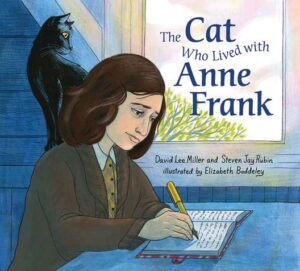Steve Rubin was born a “Chicago Boy” but moved to LA when he was four. His family lived across the street from the old Stadium Theatre in West Los Angeles and was “at the movies three times a week. I grew up a movie kid. I loved movies; my mother loved movies; my dad loved movies.”
Rubin attended UCLA, studied history and journalism, and wrote for his college paper. After college Steve “did a bunch of freelance jobs” and started writing. His first book was called Combat Films, American Realism, 1945-1970. “I basically went around and interviewed filmmakers who made the great World War II movies. Everything from Battleground to Patton.” Rubin didn’t make much money from this book, so he was “a little cannier about his next subject.” He wrote the first behind the scenes history of James Bond movies, called The James Bond Films: A behind the scenes history. This one sold really well and prompted a sequel.
From that point he began working primarily in the movie business, starting as a publicist. After 25 years in that field Rubin began producing movies. His first was a baseball comedy called Bleacher Bums, in 2002. The next effort was a WWII movie based on a true story called Silent Night. At this point Rubin crossed paths with David Lee Miller, who was running The Criterion Collection, an American home video distribution company. Rubin was hired to do commentary on the first three James Bond movies, and the two became close friends.
Miller was very interested in children’s literature. He also became aware of something Rubin calls “this little hobby of mine.” He has “dozens and dozens” of audio tapes of movies—not just soundtracks but the entire dialogue of movies. Rubin finds those tapes to be very educational for him because he hears examples of good dialogue without being distracted by the action onscreen. A former roommate referred to those tapes as ear movies.
While listening to The Diary of Anne Frank and a scene involving Anne, Peter, and a cat named Mouschi, Rubin “wondered what the cat thought of this strange situation.” He called Miller and proposed the idea. Miller “went crazy. He thought it was a terrific idea. Thus began a very long journey to write The Cat Who Lived with Anne Frank.” The Anne Frank Center on the University of South Carolina campus opened to the public September 15, 2021. This center is the Official U.S. Partner of the Anne Frank House in Amsterdam and the only partner site in North America.
The Anne Frank Center brings to life the story of the young Jewish girl who documented two years of hiding in German-occupied Amsterdam during World War II by recording daily happenings and feelings in her diary.
By sharing Anne’s legacy with visitors, students, and teachers, USC’s Anne Frank Center seeks to inspire the commitment to never be bystanders but instead to stand up together against antisemitism, bigotry, and inequality wherever it may exist.
Anne Frank wrote three times in her diary about the chestnut tree she could see from the attic window of the Secret Annex. When it fell in 2010, seeds were gathered to grow original saplings at special sites around the world.
The University of South Carolina Anne Frank Center was awarded the last original sapling from the New York non-profit AFC USA. This tree is displayed on the grounds as a living tribute to Anne Frank and to those who were instrumental in making sure her story was told and continues to be remembered.
On February 29, 2024, The Anne Frank Center hosted the inaugural Anne Frank Awards in Columbia, a celebratory event to recognize inspiring students, educators, and community partners committed to teaching about the life and legacy of Anne Frank across South Carolina and the United States.
Steve Rubin, along with Shoshona Brower, who serves as the media and education coordinator for Rubin and Miller, visited the Holocaust Museum in Washington, D.C., earlier in February before traveling to Columbia. Miller was unable to attend because of a wedding in his family. Rubin and Brower were given a tour of USC’s Anne Frank Center and visited All Good Books to sign a few copies, after a presentation at the Richland Main Library that included a presentation, Q&A, and a book signing.
Writing The Cat Who Lived with Anne Frank was a “long journey. We didn’t know anything about writing children’s books and had to do lots of research.” The duo wrote the Anne Frank House to inquire about the cat and were told no one had ever asked about the cat, which seemed like a good sign they were on the right track.
Miep Gies, who saved the diary and wrote a book about that, didn’t know what happened to the cat but confirmed there was one. A “forensic reading” of Anne’s diary confirmed that information. She mentioned Mouschi several times.
Miller and Rubin knew a children’s book about the Holocaust couldn’t be accurate in the telling of the horrors of the holocaust. “The horrors of what happened would be a little much for eight-year-olds.” Adding the cat gave more credence to the story by introducing a character every child would love and also provide substance to the plot since Mouschi was able to go out and about without dealing with security forces.
The Cat Who Lived With Anne Frank was published in 2019. Illustrated beautifully by Elizabeth Baddeley, this depiction of Anne Frank was lauded by the School Library Journal and the Jewish Book Council as “A gentle introduction to one of the darkest times in modern history and a gentle but effective introduction to one aspect of the Holocaust.”
The book is available on Amazon.
For more information on the Anne Frank Center at USC, visit sc.edu/study/colleges_schools/education/partnerships_outreach/anne_frank/index.php.






Leave a Reply